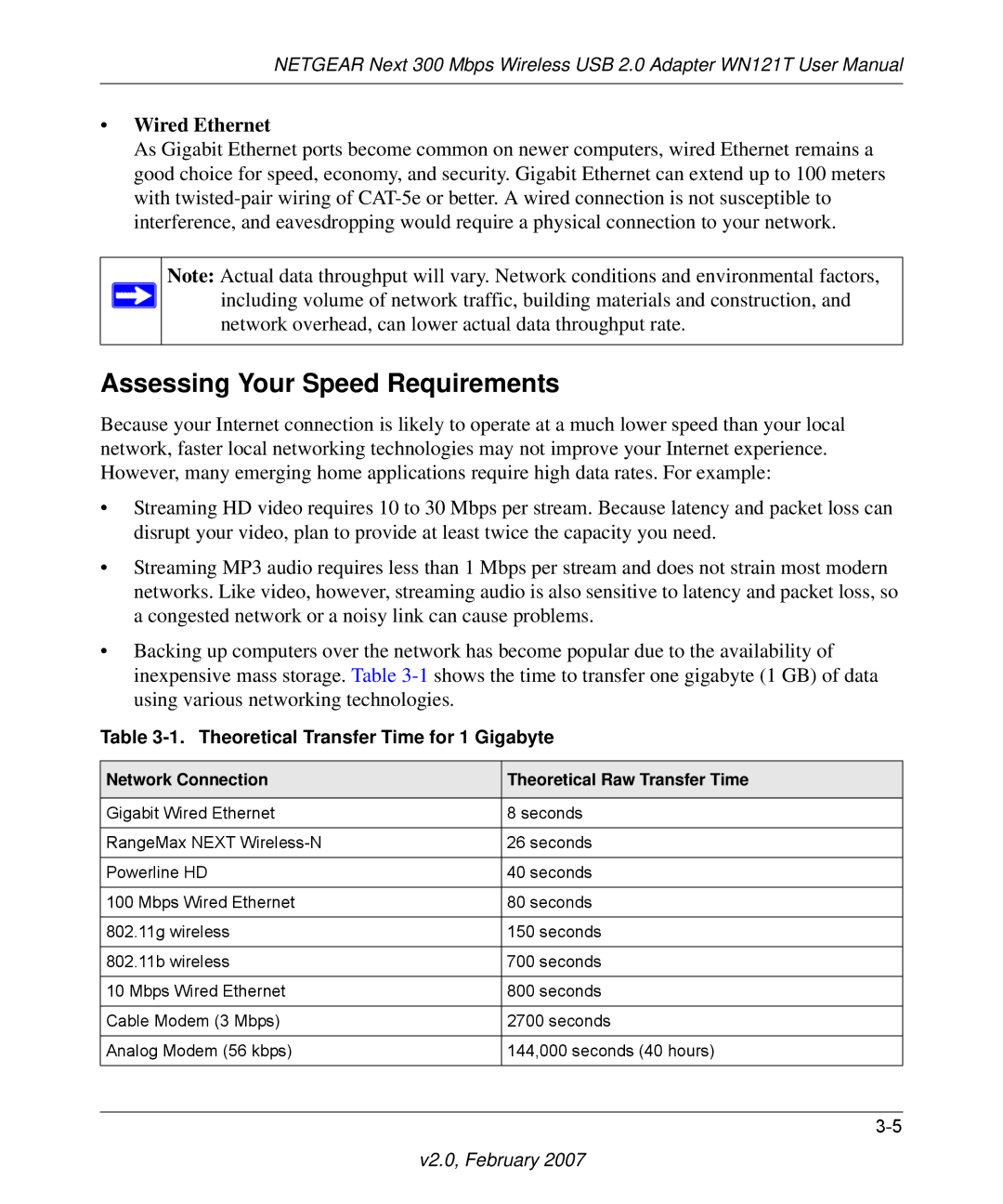
NETGEAR Next 300 Mbps Wireless USB 2.0 Adapter WN121T User Manual
•Wired Ethernet
As Gigabit Ethernet ports become common on newer computers, wired Ethernet remains a good choice for speed, economy, and security. Gigabit Ethernet can extend up to 100 meters with
Note: Actual data throughput will vary. Network conditions and environmental factors, ![]() including volume of network traffic, building materials and construction, and
including volume of network traffic, building materials and construction, and
network overhead, can lower actual data throughput rate.
Assessing Your Speed Requirements
Because your Internet connection is likely to operate at a much lower speed than your local network, faster local networking technologies may not improve your Internet experience. However, many emerging home applications require high data rates. For example:
•Streaming HD video requires 10 to 30 Mbps per stream. Because latency and packet loss can disrupt your video, plan to provide at least twice the capacity you need.
•Streaming MP3 audio requires less than 1 Mbps per stream and does not strain most modern networks. Like video, however, streaming audio is also sensitive to latency and packet loss, so a congested network or a noisy link can cause problems.
•Backing up computers over the network has become popular due to the availability of inexpensive mass storage. Table
Table 3-1. Theoretical Transfer Time for 1 Gigabyte
Network Connection | Theoretical Raw Transfer Time |
|
|
Gigabit Wired Ethernet | 8 seconds |
|
|
RangeMax NEXT | 26 seconds |
|
|
Powerline HD | 40 seconds |
|
|
100 Mbps Wired Ethernet | 80 seconds |
|
|
802.11g wireless | 150 seconds |
|
|
802.11b wireless | 700 seconds |
|
|
10 Mbps Wired Ethernet | 800 seconds |
|
|
Cable Modem (3 Mbps) | 2700 seconds |
|
|
Analog Modem (56 kbps) | 144,000 seconds (40 hours) |
|
|
